Looking for things to do in Valencia, one of the most vibrant and busiest cities in Spain? In this post, you’ll find not only the best points of interest in Valencia but also many other tips 😉
Valencia is the third biggest city in Spain and was founded in 138 BC. It has a rich and interesting history, extraordinary tourist attractions and a fascinating contrast between a medieval and a futuristic city.
The first time I saw a picture of Valencia was on social media when one of my cousins visited the City of Arts and Science there – I was astonished by the otherworldly attraction.
Little did I know at the time that not only would Valencia become one of my favorite Spanish destinations, but one day I would also live there briefly.
There are so many excellent places to visit in Valencia that during every visit I endeavor to have new adventures and go to points of interest that I’ve never been to before.
After visiting the city one more time, I decided to write this post to give you some tips on what to do in Valencia so next time you’re in town, you can get the most out of your visit.
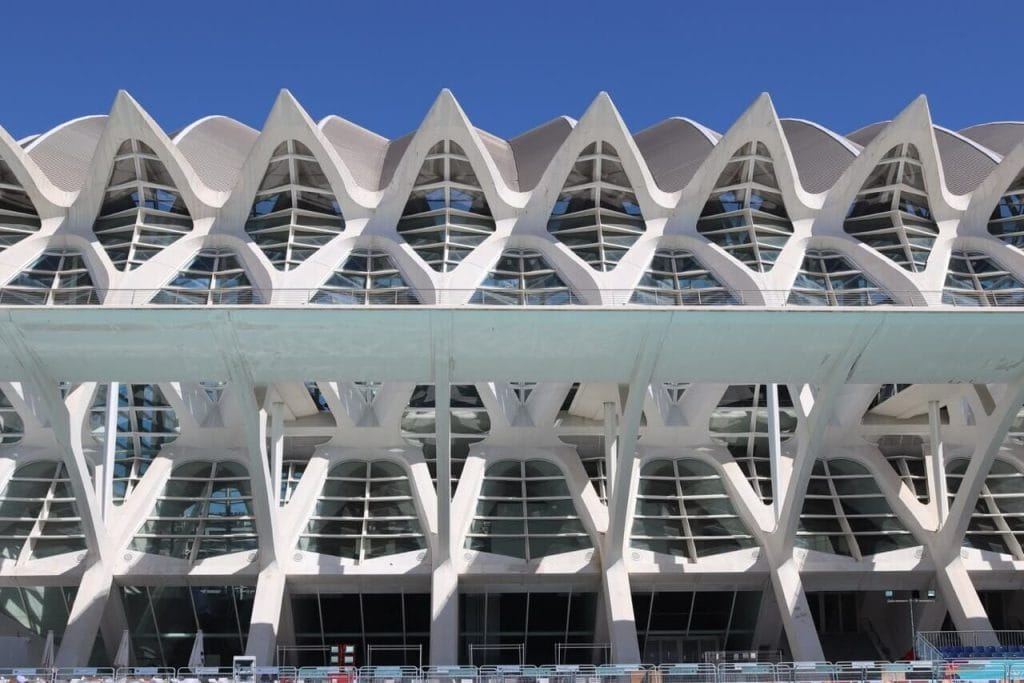
7 Best Things to Do in Valencia
1 – Visit the Futuristic City of Arts and Science
One of my favorite things to do in Valencia is to go to the City of Arts and Science, one of the greatest landmarks in Spain.
Designed by the renowned Valencian architect, Santiago Calatrava, and Félix Candela, this cultural and architectural complex is made up of six ultra-modern buildings and a white cable-stayed bridge.
Located at the end of the Old Turia Riverbed, construction on it started in July 1996, with the first building inaugurated in 1998 and the final unveiling only happening in 2009.
There is so much to see and do in the City of Arts and Science, that you can easily spend half a day there and still not see everything.
From the Palau de les Arts Reina Sofia (the avant-garde Valencian Opera House), to the Museu de les Ciències Princípe Felipe, L’Hemisfèric (an IMAX / 3D cinema and planetarium), L’Umbracle (a magnificent gardened esplanade) and L’Oceanogràfic (the largest oceanographic aquarium in Europe).
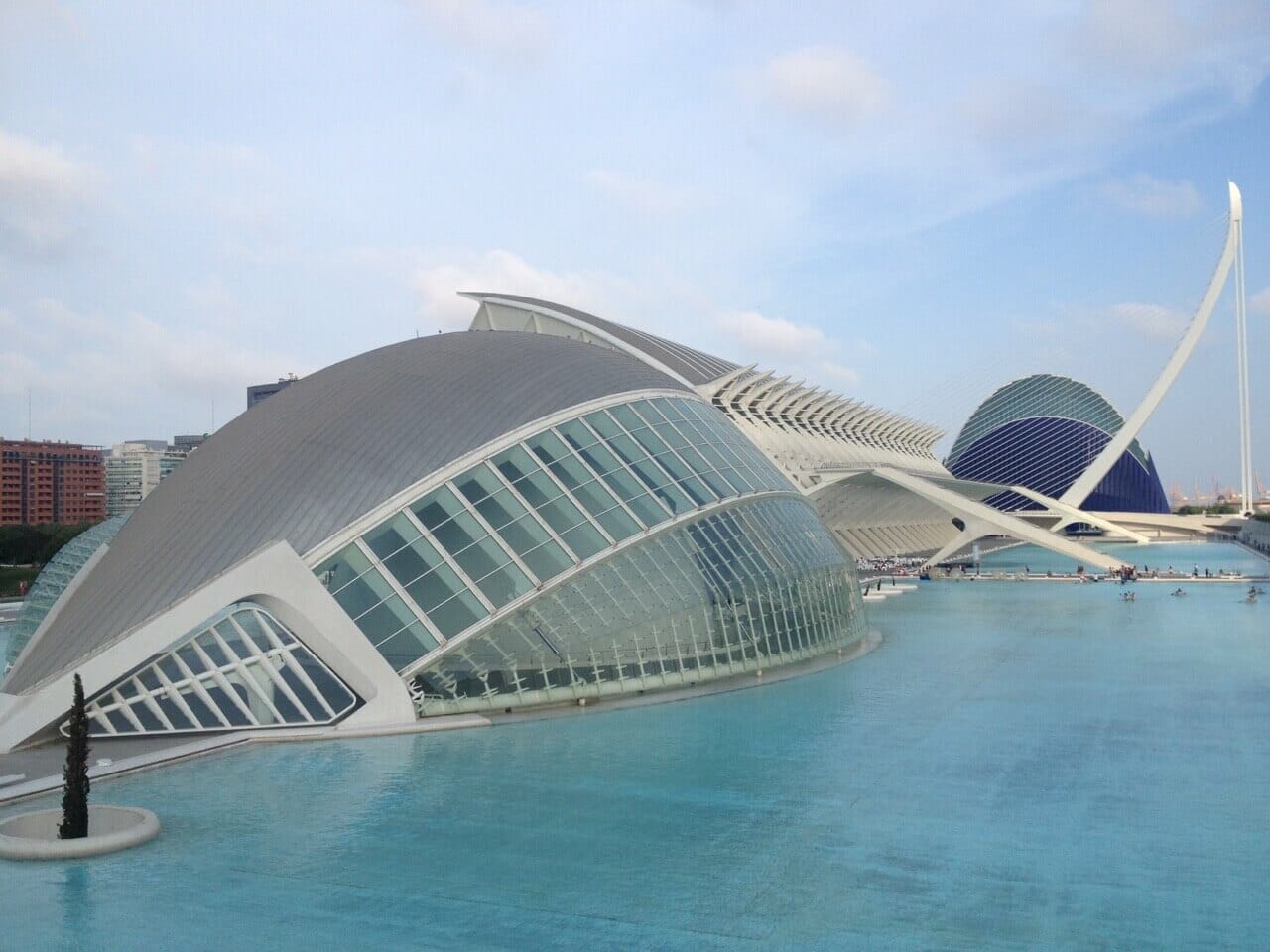
You could pay a quick visit to the City of Arts and Science just to take pictures and marvel at the architecture, but I really recommend taking the 1½ h guided tour in the Opera House to learn more about the construction of this remarkable building and also see some of its main halls. You should also visit L’Oceanogràfic.
If you are travelling with kids, the Science Museum is also a great option.
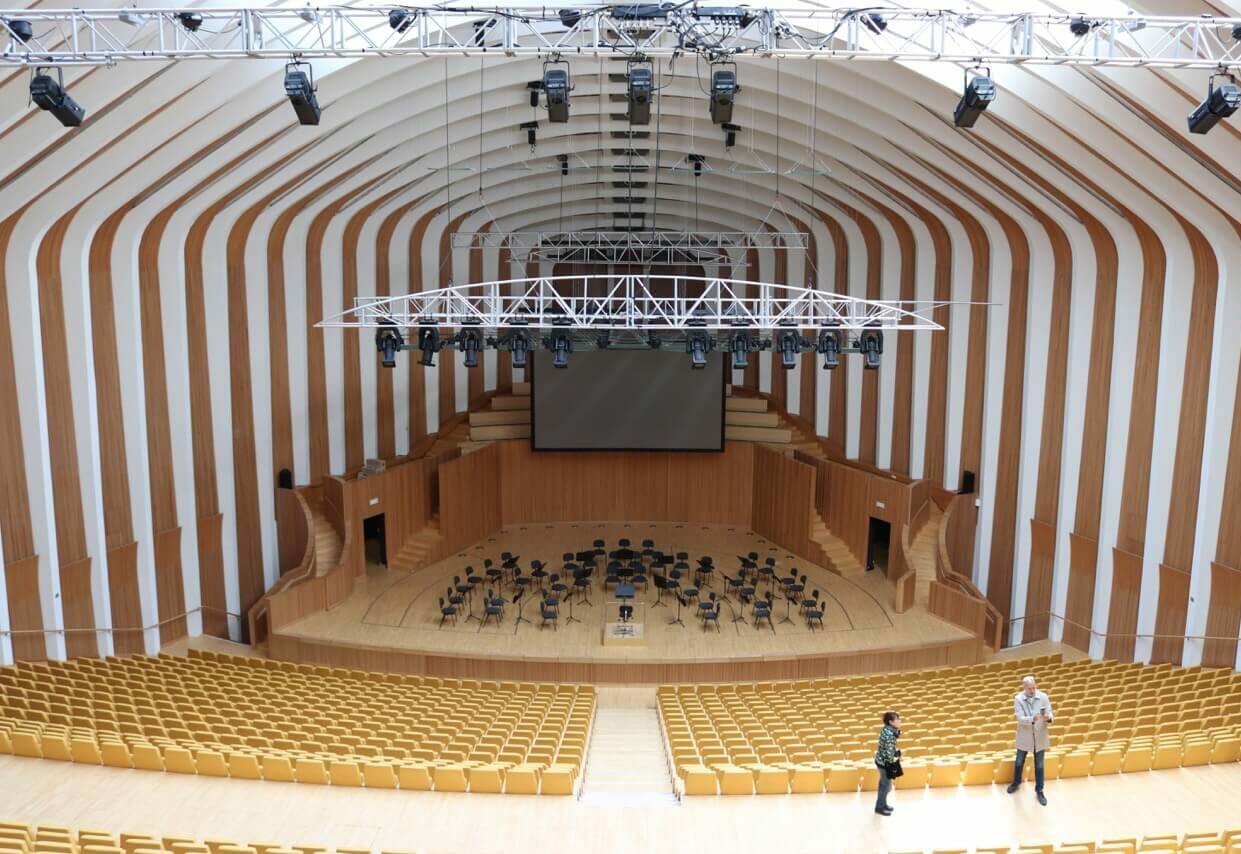
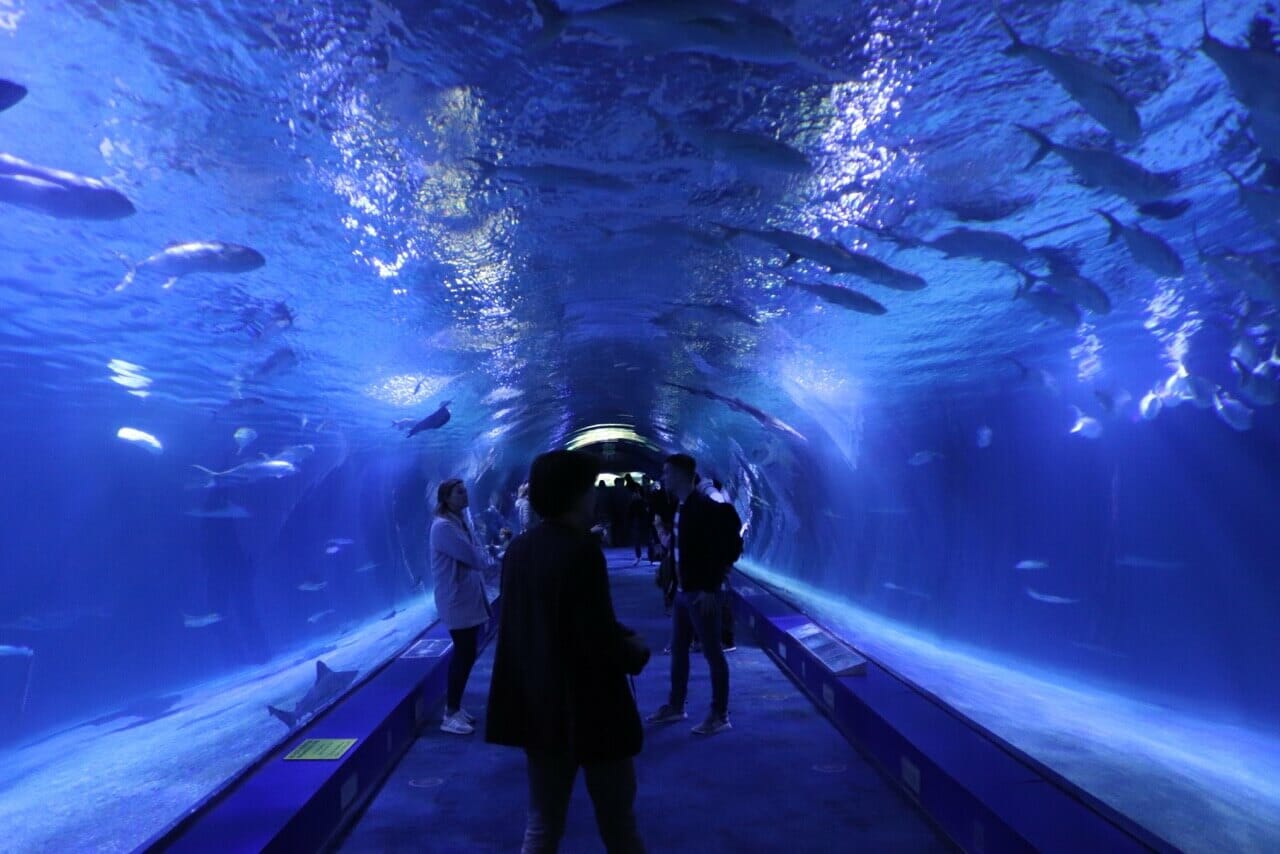
The City of Arts and Science is one of Valencia’s most important points of interest and you should definitely put it on your list.
2 – Be surprised by Valencia’s Sistine Chapel
If you are already surprised to hear that there’s a “Sistine Chapel” in Valencia, just wait till you see the Church of San Nicolás in person.
Also known as Parroquia de San Pedro Mártir y San Nicolás Obispo, this catholic parish church was constructed in the 13th century, completely refurbished in Valencian Gothic style in the 15th century and decorated in baroque style at the end of the 17th century.
Between 1697 and 1700 the almost 2000 m² ceiling was painted by Dionís Vidal with the life of San Pedro Mártir on the left, and San Nícolás de Bari on the right.
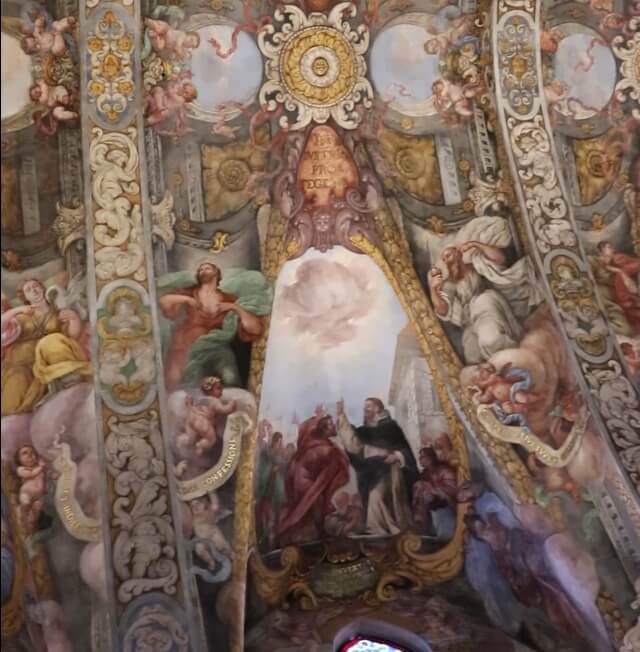
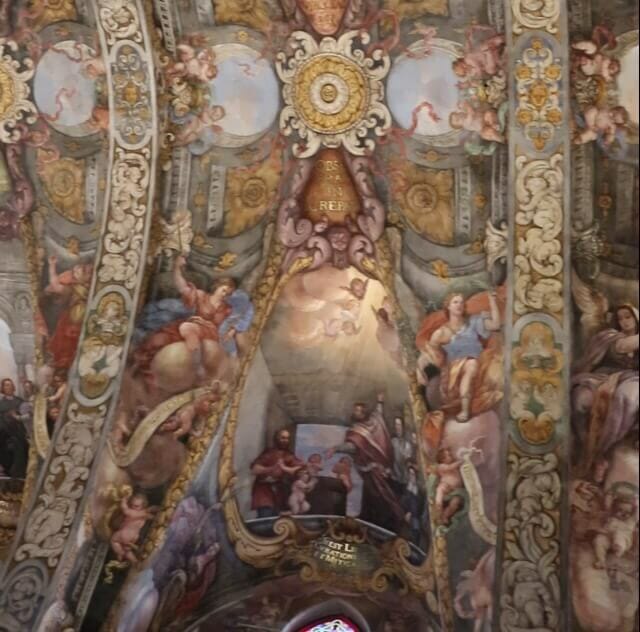
During the Spanish Civil War, 1936-1939, the chapels were destroyed and the church was converted into a warehouse. But in 2016, Iglesia San Nicolás was completely restored and recovered its full splendour.
OMG, when I entered the church and saw the gothic vaults covered with superb and vivid frescoes I was completely speechless.
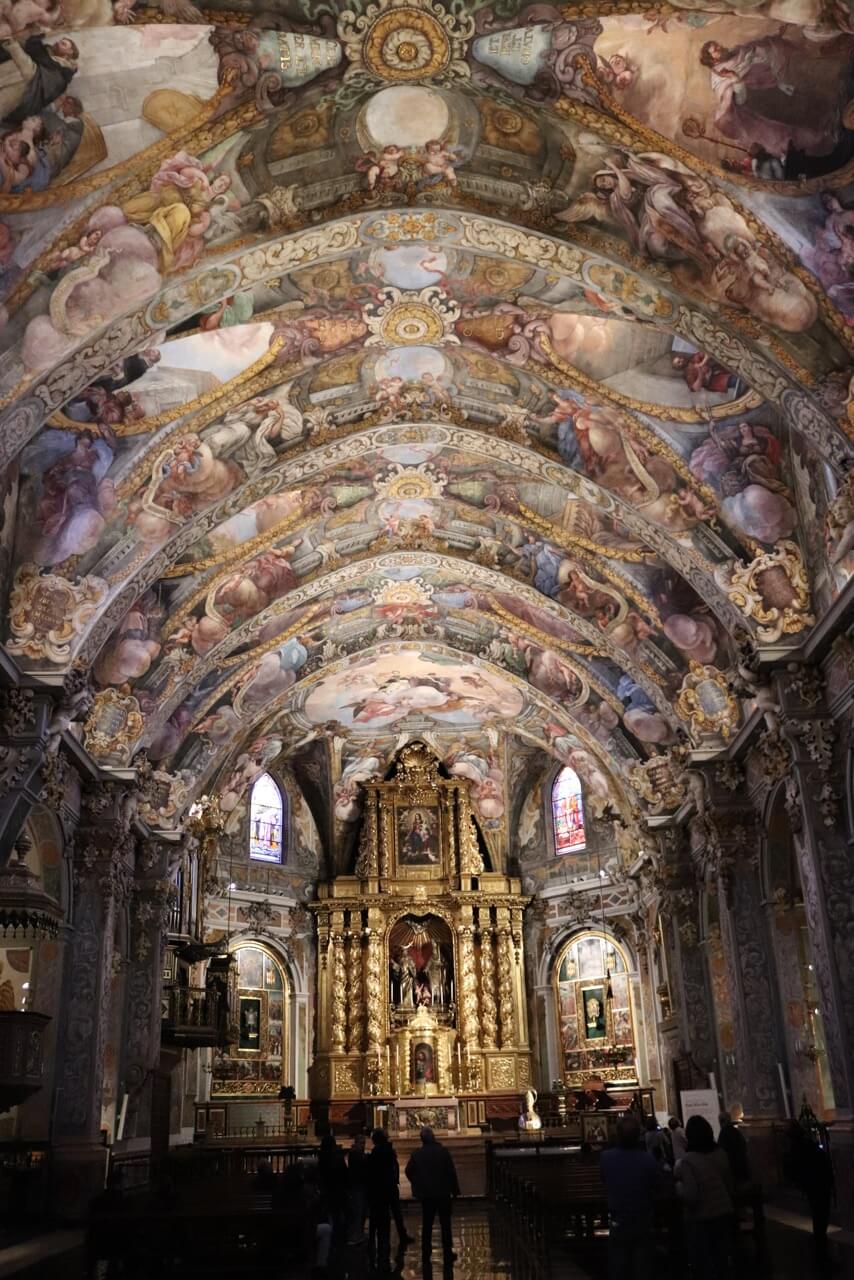
Iglesia San Nicólas is one of the greatest examples of coexistence between baroque and gothic architecture in Valencia.
I just loved it!!
3 – Discover a piece of Africa in Valencia
Since 2008 when the Bioparc opened, Valencia’s visitors can get close to wild animals and experience them in re-creations of African ecosystems, such as The Savannah, Madagascar and an Equatorial Forest.
This 10-hectare (25 acres) innovative animal park was designed according to the zoo-immersion concept, where animals live in social groups of their own kind and coexist with other compatible species, as occurs in nature.
Paths and tunnels connect the areas and there aren’t traditional railings and cages common to many zoos. Instead, they use natural barriers to separate visitors from the animals, such as rivers, ponds, streams and rocks.
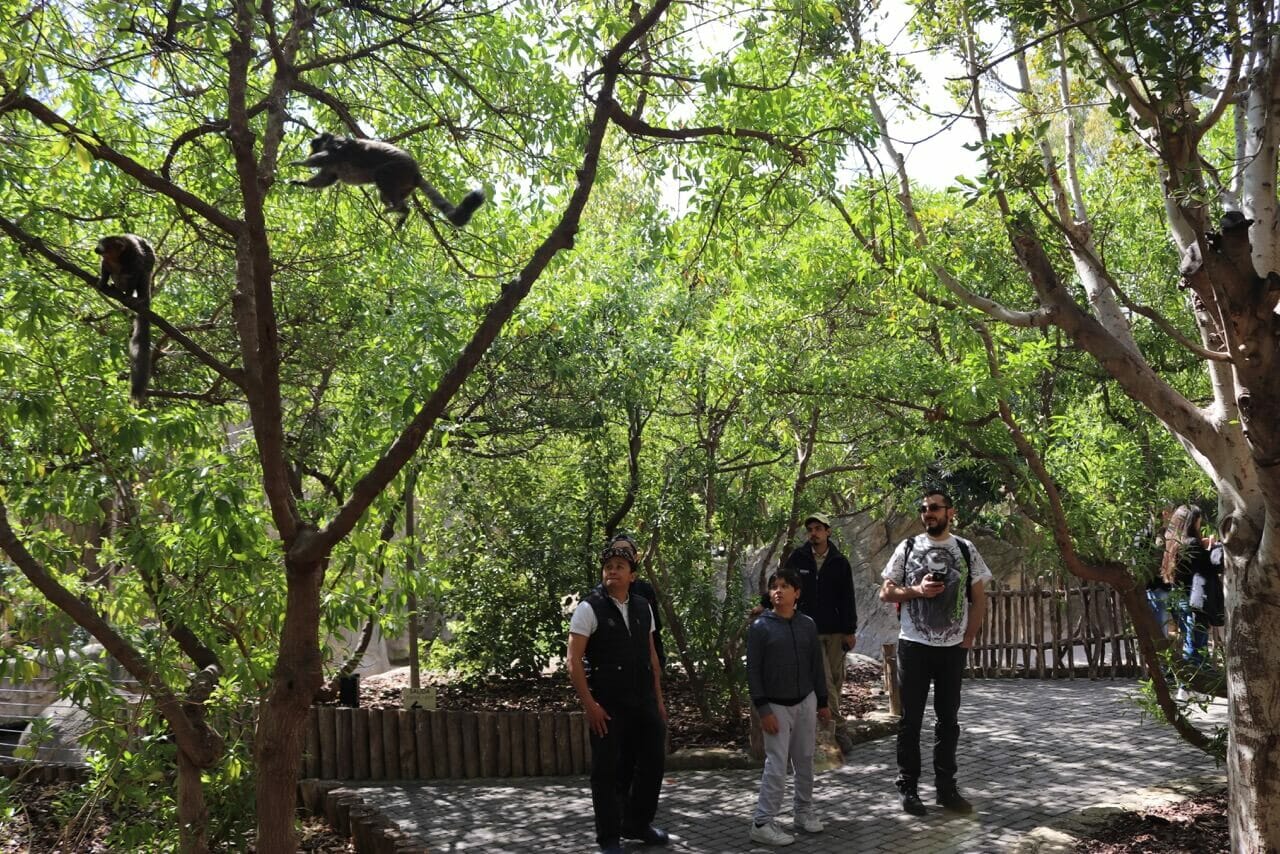

I was truly impressed and fascinated by the Bioparc!
Bioparc Valencia is located in Cabecera Park, at the eastern end of Turia Gardens, within a 15 min drive or 40min walk from the city center.
Don’t miss the Birds and Mammals Exhibition held every day at the amphitheatre, an open-air arena surrounded by acacia and baobab trees.
4 – Wander around the Old Town
Valencia is one of the oldest cities in Spain and its first settlements date back to 138BC. The city fell under the Roman and Byzantine empires, ruled by Moors and Christians; was walled twice, first by the Muslims during the 10th century and secondly under the regime of king James I during the 14th century.
Wandering around the old town is one of the best things to do in Valencia because it is an opportunity to go back in time, learn about Valencia’s history and admire the outstanding architectural legacy inherited from different cultures and civilisations.
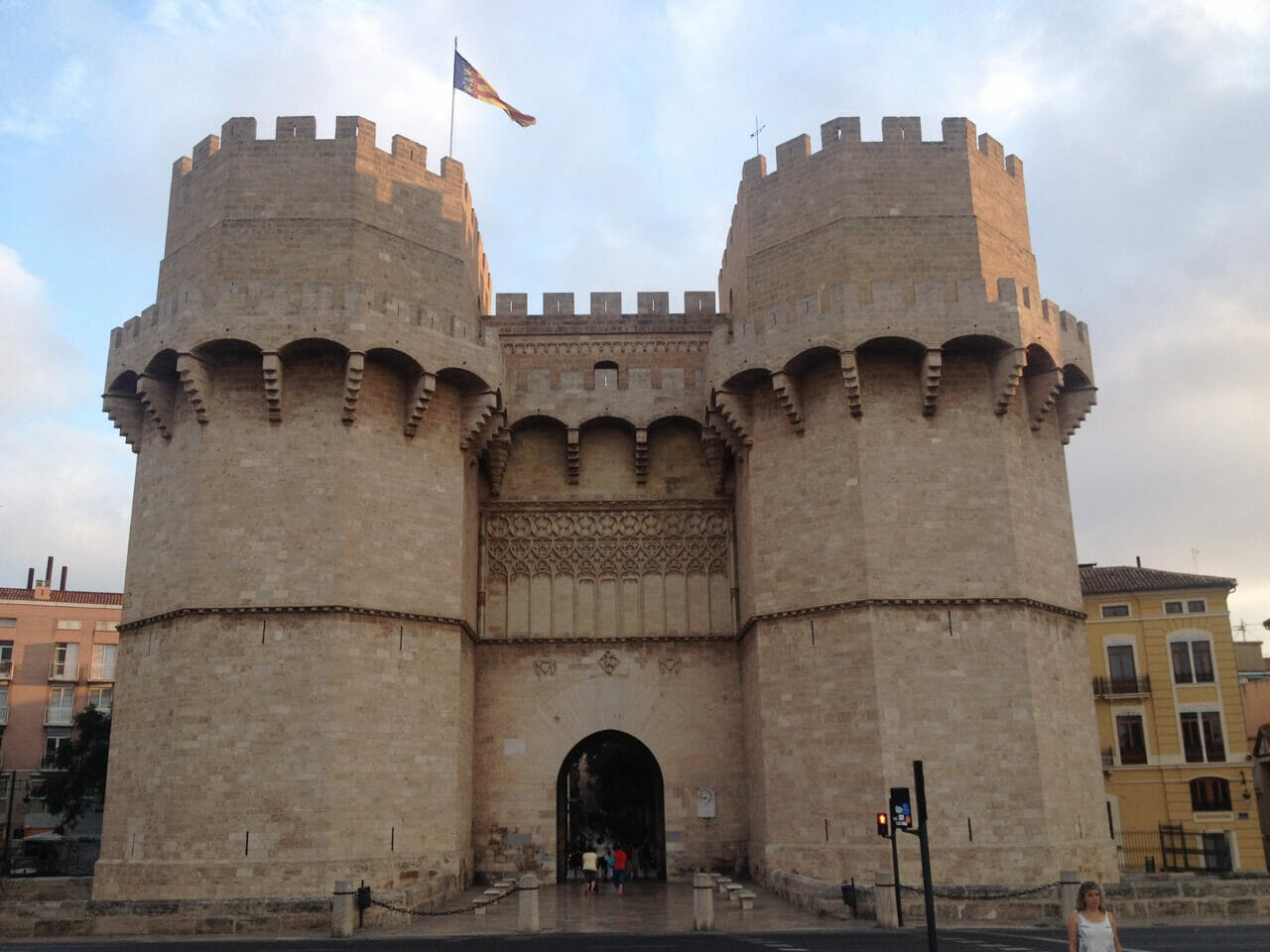
Some of the points of interest in Valencia’s old town that you can’t miss are:
- Plaza de la Reyna (the city’s busiest square and the gateway to many interesting attractions);
- Valencia’s Cathedral (where you can find the holy chalice used by Jesus during the Last Supper);
- the Silk Market (a UNESCO heritage site and one of the city’s architectural treasures);
- Plaza de la Virgen (one of the oldest squares in Valencia) and its Basilica;
- The Almonia Museum (where you can see the origins of the city);
- Serranos and Quart Towers (two city gate towers remaining from the ancient walled city of Valencia);
- Plaza del Ayuntamiento;
- The Ceramic Museum;
- El Carmen district.
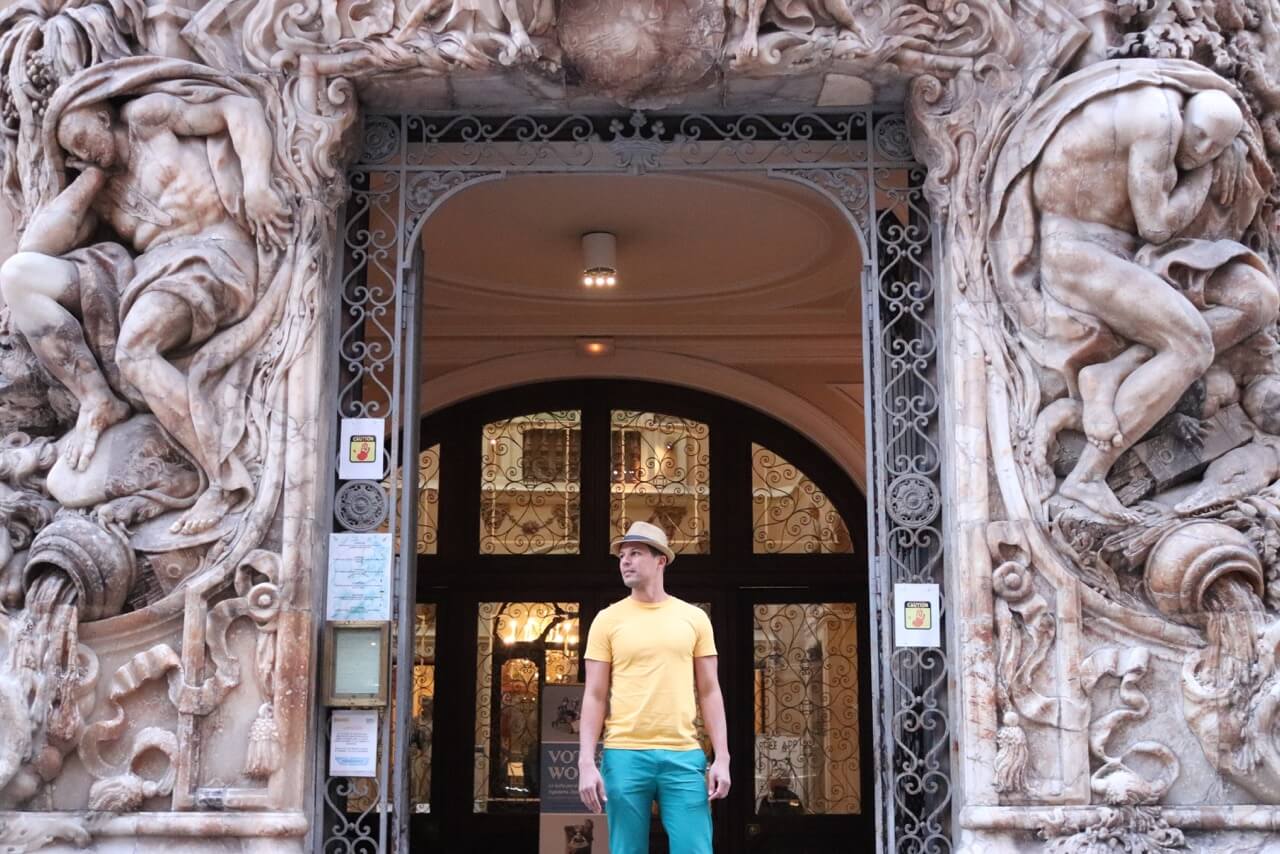
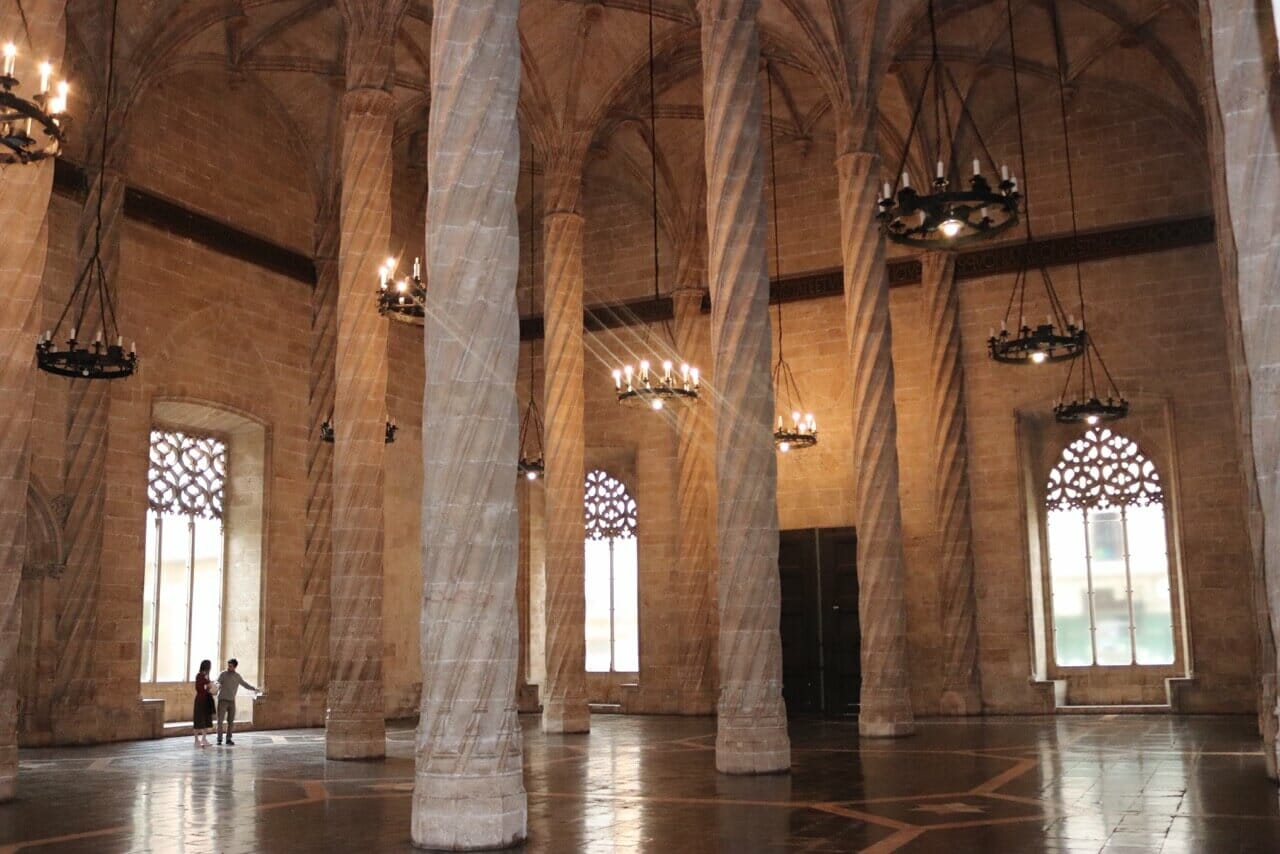
5 – Have a “paellaporn”
I’m sure you’re familiar with paella, the queen of Spanish cuisine and one of the must-try Mediterranean dishes, that’s prepared with rice, tomato, peppers, garlic, onion, saffron and seafood.
But you may not know that this renowned Spanish dish was created in Valencia, in El Palmar district, in the middle of the 19th century.
The most popular version is seafood paella, but the original “paella valenciana”, consists of white rice, green beans, meat (chicken, duck and rabbit), white beans, snails and seasoning such as saffron and rosemary.
The variety of rice dishes served in Valencia restaurants is enormous and among them, you can find paellas of: meat, seafood, mixed, pork, black, vegetarian, lobster, etc.
During my recent 10-day trip to Valencia, I ate paella almost every single day. Why? Because the dish always tastes better where it was created, and having paella with a glass of wine on a sunny plaza is one of the top things to do in Valencia.
Don’t forget to try as many kinds of paella as you can, because this is what Valencia is famous for.
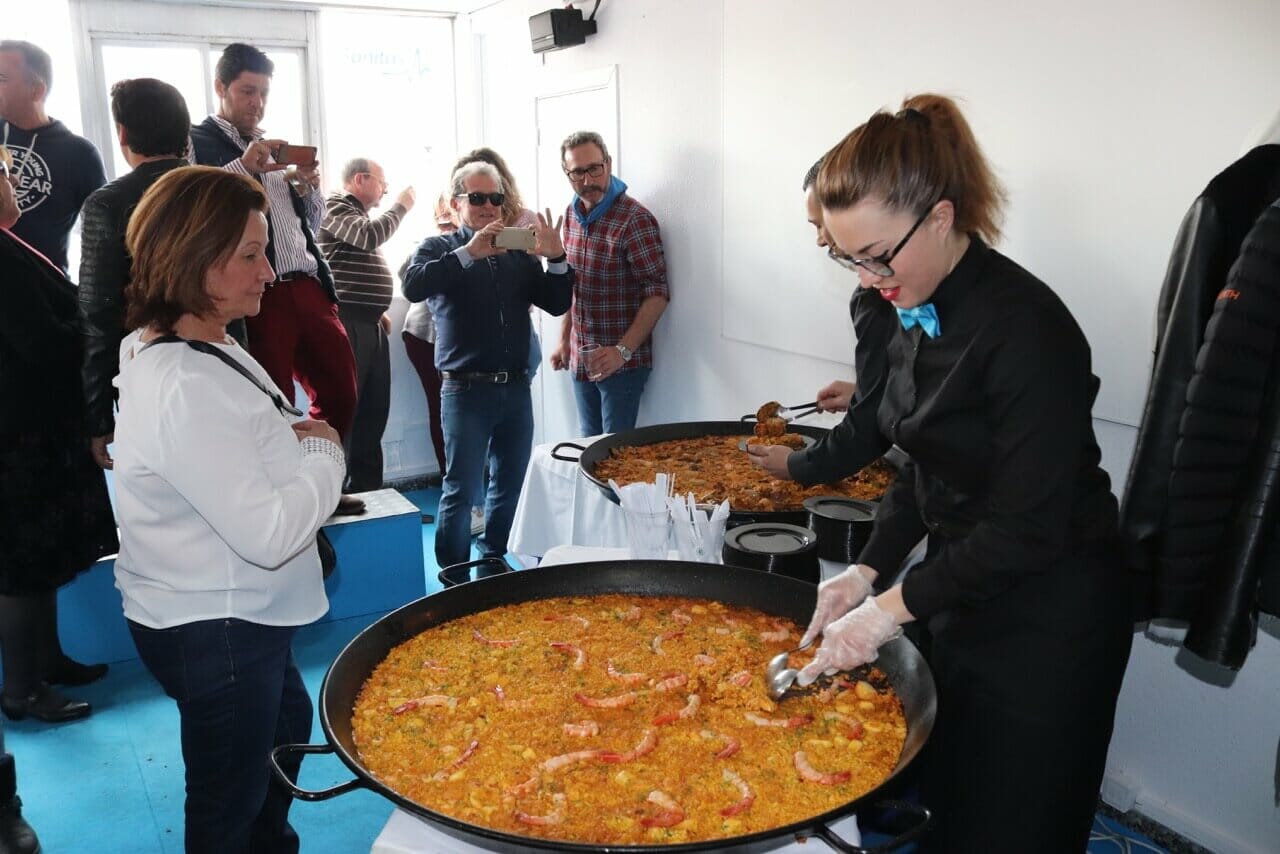
6 – Stroll around Jardín del Turia
Valencia offers a great number of green spaces to complement its urban city landscape. Among those places, my favorite is Jardín del Turia.
Situated in the former bed of the river, this 1 million square meters lush garden surrounded by ancient walls and buildings allows cyclists and pedestrians to traverse much of the city without using the roads.
Additionally, the Turia Garden boasts numerous paths, ponds, athletic tracks, football and rugby pitches, fountains, etc., and it’s the perfect place for a quiet stroll, biking, running or just relaxing.
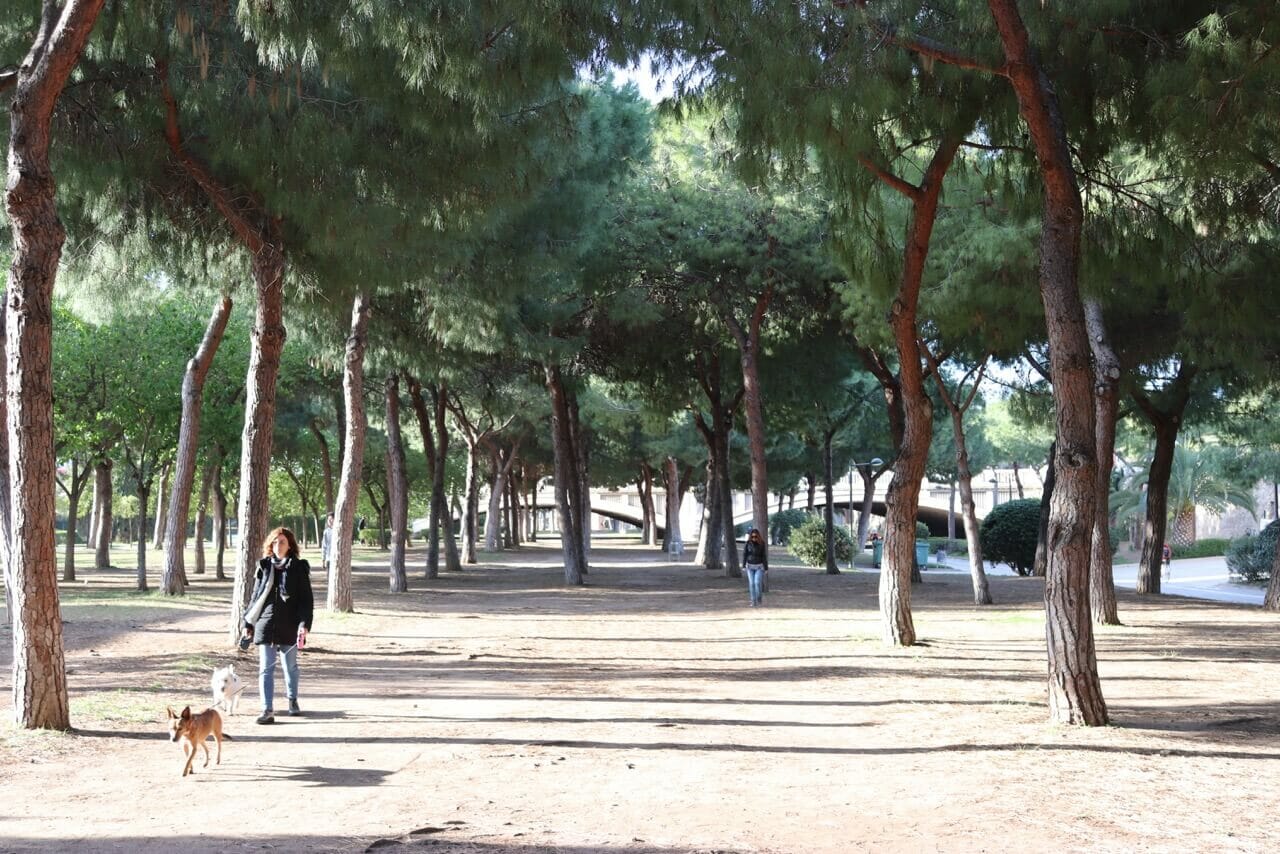
I love strolling around the gardens and every time I’m in Valencia I opt to walk along the “río”, as locals refer to it, instead of using public transportation.
I’m fascinated by their decision to change the course of the river after a massive flood in 1957 and create this brilliant green area in the centre of the city.
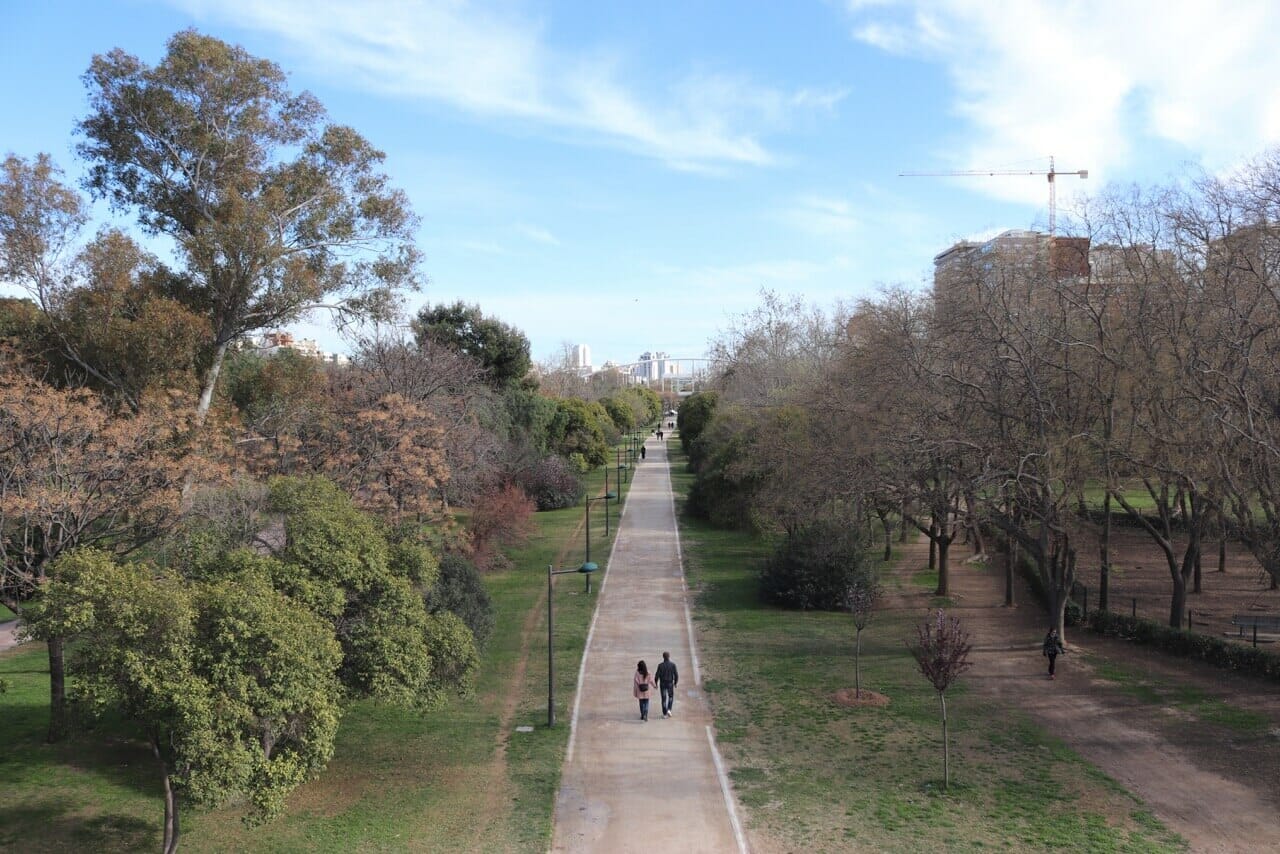
If you’re visiting Valencia with kids, you can’t miss Parque Gulliver, a gigantic 70m long sculpture of Gulliver with ramps, slides and a staircase, as it’s one of the fun things to do in Valencia with kids.
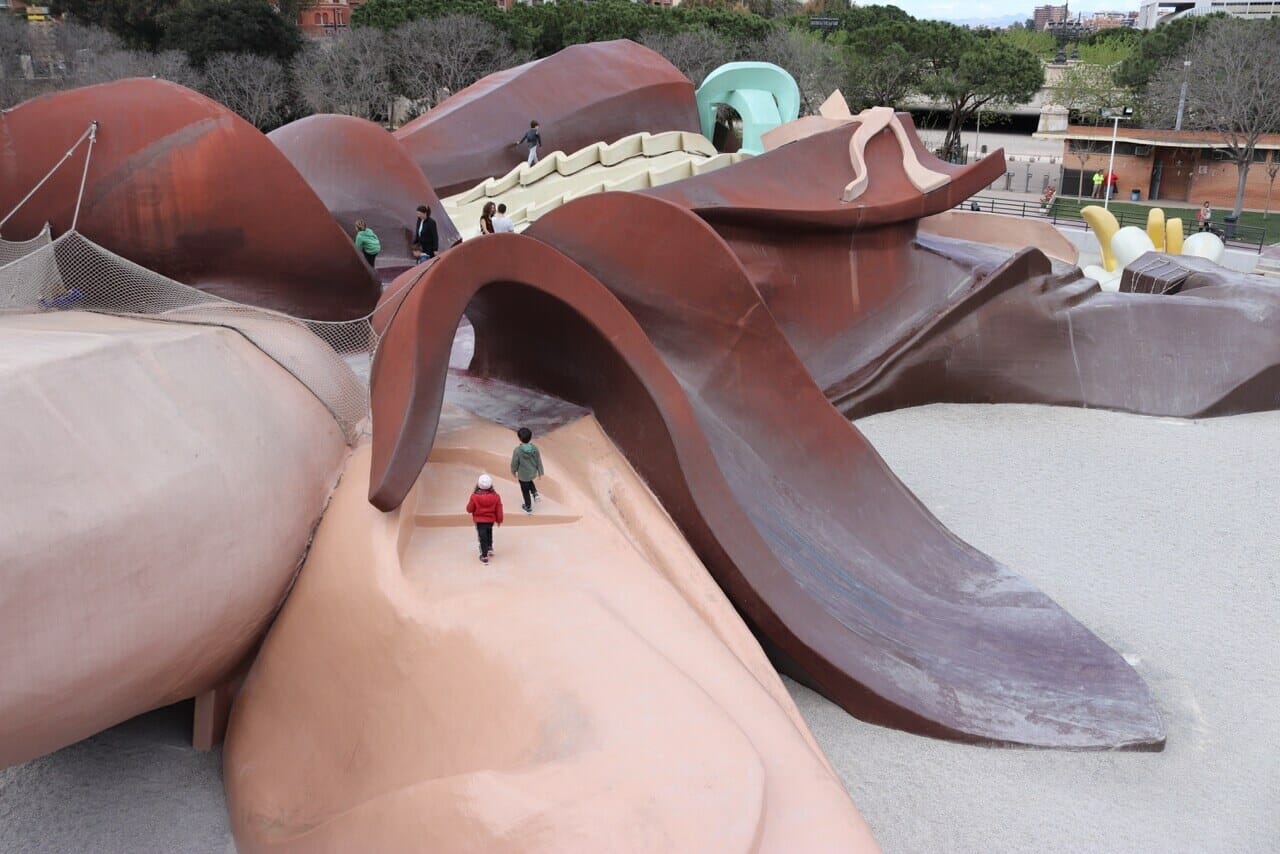
7 – Be in awe of the Valencian Gothic paintings at Museo de Bellas Artes
Located in a stunning baroque building in the former Turia riverbed, this art gallery was founded in 1913 and houses more than 2,000 works, including primitive Valencian paintings (from the 14th to 17th centuries), a self-portrait of Diogo Velásquez, paintings by artists such as Goya and El Greco, sculptures by Mariano Benlliure, interesting archaeological pieces and a collection of contemporary art.
But what really stands out is the collection of Gothic panels. Located on the ground floor, some of these magnificent paintings stretch from floor to ceiling and they left me completely in awe!
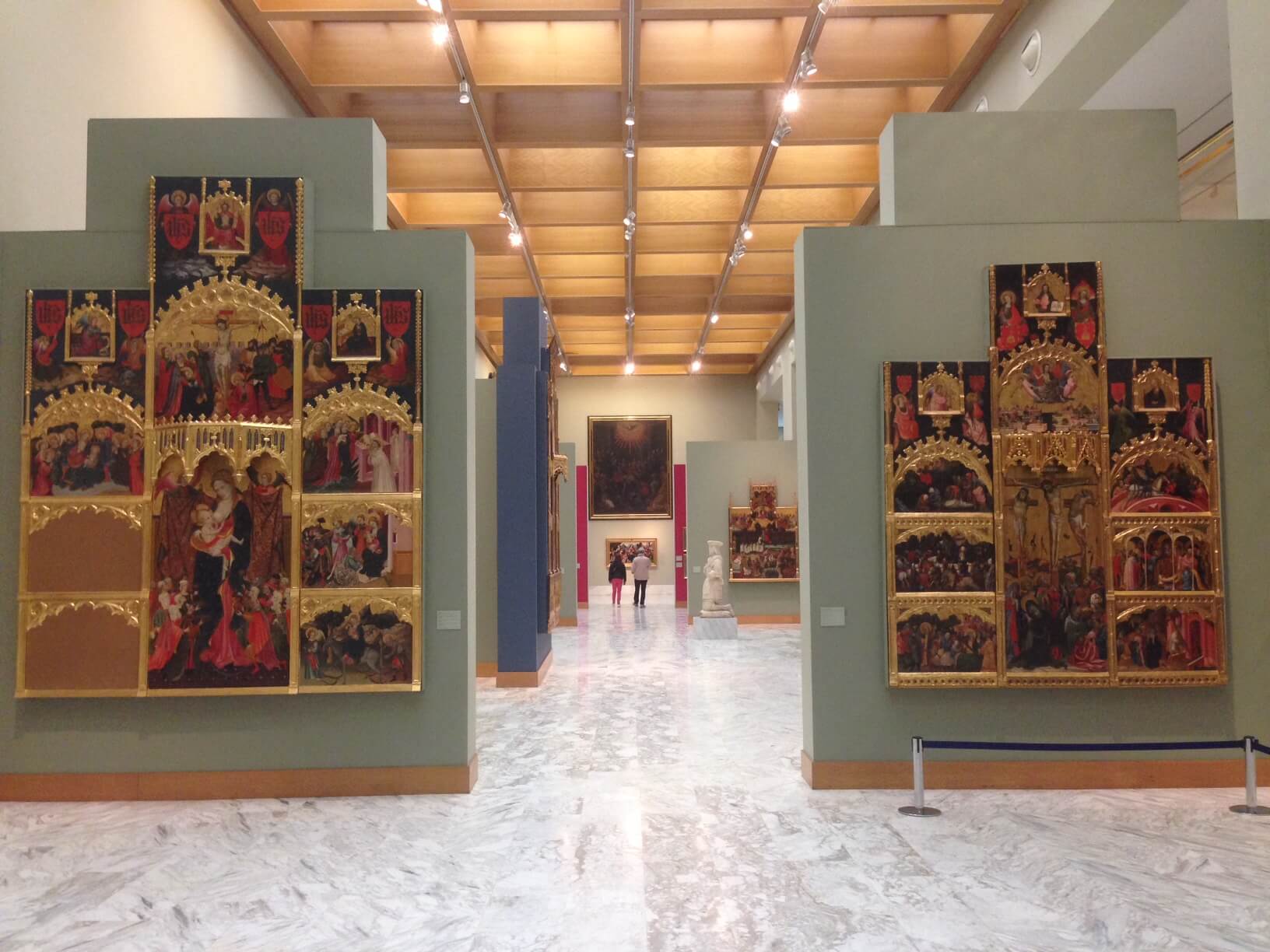
A visit to the Valencia Museum of Fine Arts, which also features one of the most important 16th-century Renaissance courtyards, should take around 1h, and there is no entrance fee…
These are just seven of the top things to do in Valencia that you can easily achieve in three, or even two, days.
Valencia is a beautiful and exciting city and if you follow these tips you will understand why it is one of the best cities to visit in Spain.
Other 10 Valencia Points of Interest
Other points of interest in Valencia that you might consider visiting are:
– Mercado Central: a modernist style building and one of the oldest markets still in use in Europe;
– Colon Market: a former food market that has been converted into a gourmet venue;
– Valencia beaches: if you visit Valencia from May to September, you can’t miss the urban beaches Playa de la Malvarrosa and Las Arenas and unspoiled beaches near Valencia such as Albufera and la Devesa.
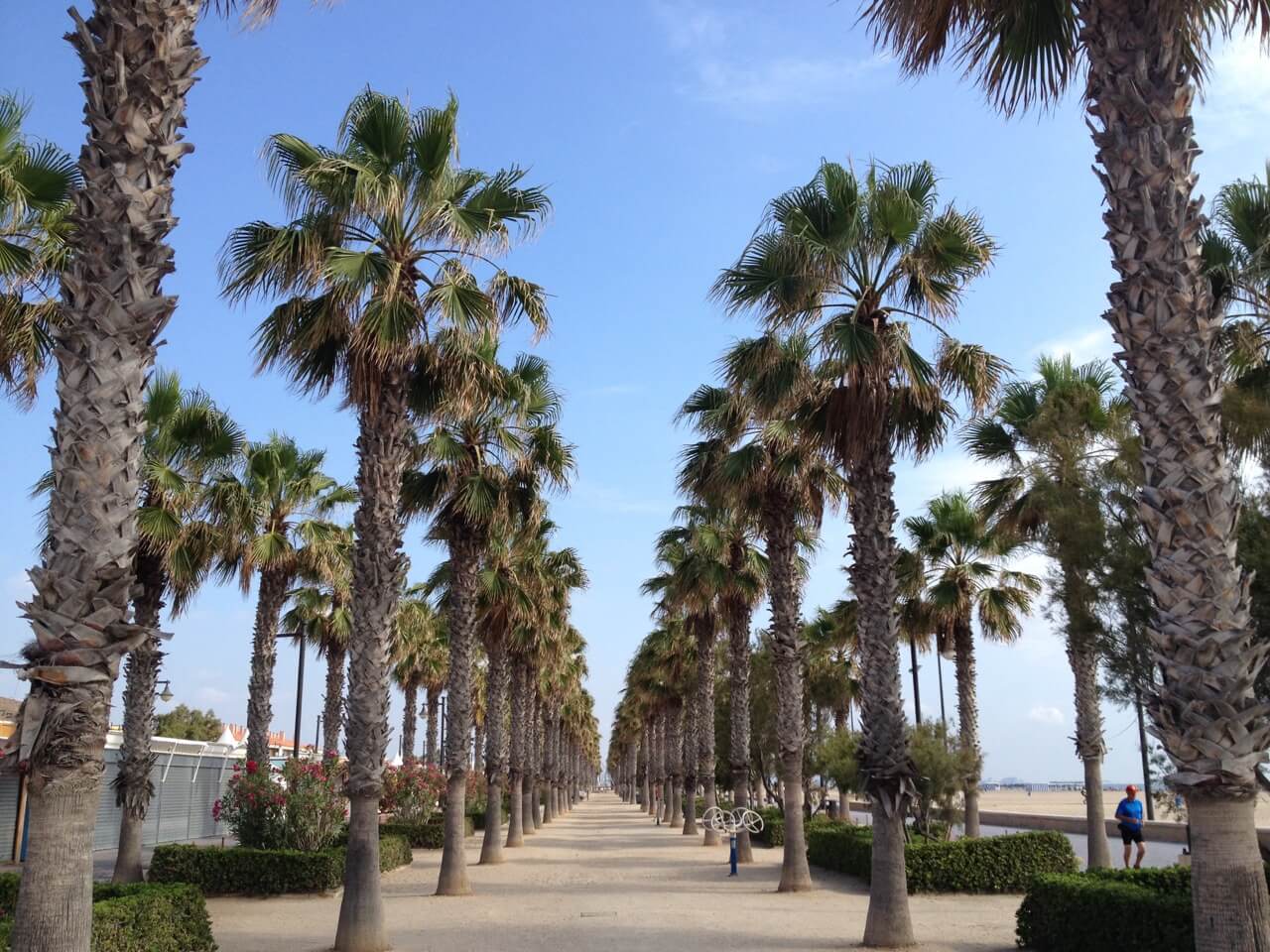
– La Marina de Valencia: one of the hottest spots in the city during the summer offering music, sports, culture, nightlife and gastronomy.
– Marina Beach Club: a trendy beach club/restaurant with a large dining area and poolside seating that provides great views of the beaches and sea.
– Old Port Clock Tower Building: another one of Valencia’s architectural treasures and one of the most iconic buildings in the city.
– Valencia Institute of Modern Art (IVAM): one of the leading institutions of modern and contemporary art in Spain.
– Silk Musem: the best place to discover Valencia’s rich silk tradition.
– Palau de la Musica: a fine example of contemporary architecture overlooking the Turias Garden.
Safe Travels and have fun in Valencia.
More Valencia posts that might interest you:
- Fallas Valencia: A Uniquely Spectacular Festival
- If the bulls aren’t injured is it acceptable to watch a bullfight?
- 30 Best Things to Do in Santorini
- Where to Stay in Santorini
- 10 Best Beaches in Algarve
- 15 Best Things to Do in Faro, Portugal
- How to Get to Pig Beach, Bahamas
- 10 Tips For Starting a Healthy Lifestyle
- What to Wear in Santorini
- 25 Best Things to Do in Dubai
Don’t forget to save these pins for later 😉
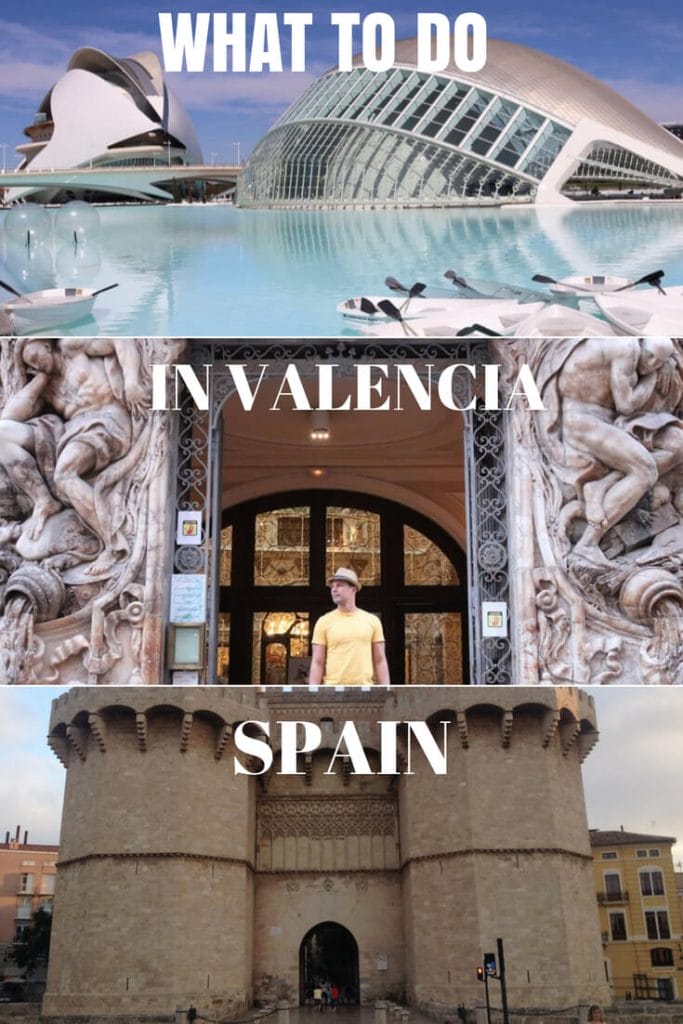
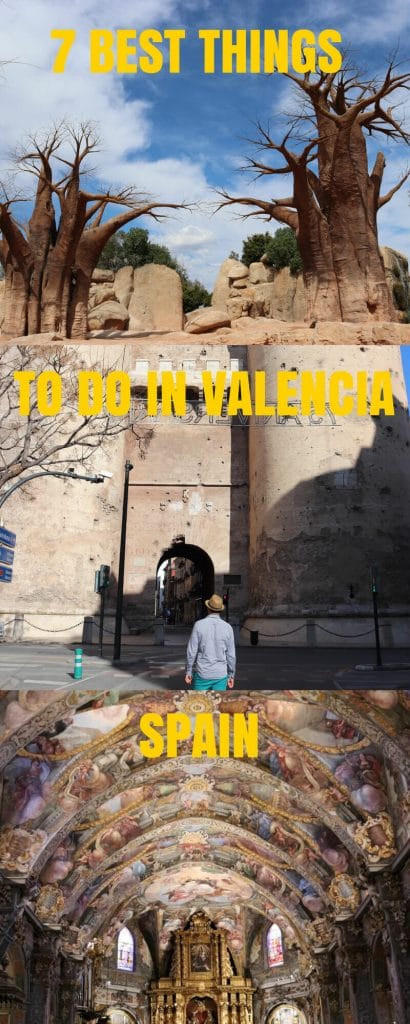
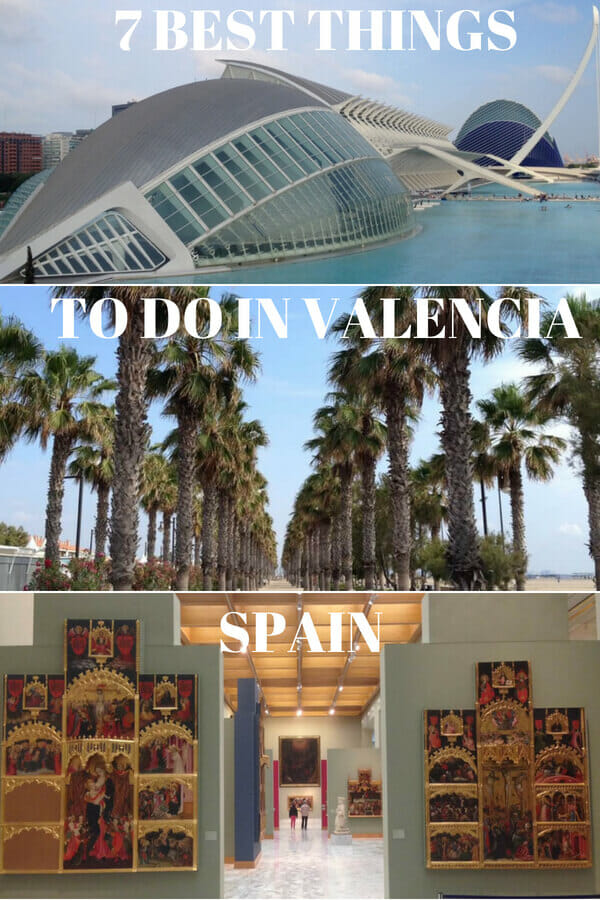
I always recommend buying travel insurance, which can literally be your lifeline if something happens to you and if your luggage is lost or stolen.
I always use World Nomads Travel insurance for independent travellers. It’s easy to buy, extend & claim online, even after you’ve left home.
Get yours here.
Planning your Visit and Things to Do in Valencia
Where’s Valencia?
Valencia, the capital of the autonomous community of Valencia and the third-largest city in Spain after Madrid and Barcelona, is located on the east coast of Spain, around 300 Km (186 mi) of Madrid, Spain’s capital (check map here).
How to get there?
There is an international airport in Valencia, and some of the airlines operating flights to Valencia are British Airways, Easyjet, Vueling, Iberia, Air Europa and Ryanair.
You can book your flights with Skyscanner, which is the website that I use and trust.
You can also get to Valencia by train from Madrid and Barcelona with Renfe, or by bus with Avanza or Alsa.
Best time to visit Valencia
Valencia has a Mediterranean climate with consistently pleasant weather. Average high temps range from 15C (59F) in the wintertime to 30C (85F) in the height of summer.
You can visit Valencia all year round and I would say that the best time is between May and September.
However, if you want to see the Fallas Festival you must go between 15th and 19th of March.
How many days do you need in Valencia?
At least two full days. But if you’re visiting Valencia in the summer months or during the Fallas Festival (between 15th and 19th of March), you should spend at least three days in the city.
Valencia is a walkable and lovely metropole. The longer you stay, you can enjoy its attractions without rushing and wandering around its famous neighbourhoods and also visit some pueblos (small towns) nearby.
Where to stay in Valencia?
I stayed at Twenty Granada and if you’re looking for hotels in Valencia, I also recommend:
- Budget: Hostal Antigua Morellana, Cantagua Hostel and The River Hostel.
- Great Cost/Benefit: Sohotel Ruzafa, B&B Hi Valencia Boutique and Venecia Plaza Centro
- Luxury: Vincci Lys, Hotel Medium Valencia and One Shot Palacio Reina Victoria 04
Where to eat & drink?
If you’re looking for a place to eat, some of the restaurants that I recommend in Valencia are:
- Bar Ricardo – Tapas
- Nori Izayaka – Japanese food
- Ricard Camarena – A michelin-starred Restaurant
- El Poblet – Spanish food
- Casa Montaña – Tapas
- Casa Montaña – Winery & Tapas
Read the reviews of the restaurants in Valencia on Trip Advisor here.
Valencia Tours
Book your tour online in advance with Get Your Guide here.
Extra Valencia Tips
- If you want to save some money during your stay in Valencia, buy the Valencia Tourist Card. With this card, you travel for free on buses, metros and trams and get free entry to municipal museums and monuments. The cheapest card, the 24h one, cost €15. Just the metro from the airport to the city centre costs € 4,5.
- Book Your Flight Find deals on airlines on my favorite search engine: Skyscanner. Be sure to read my How to find cheap flights article.
- Rent A Car Rental Cars is a great site for comparing car prices to find the best deal.
- Book Accommodation Booking.com is my favorite hotel search engine. But Hotels.com and Hilton Hotels have very interesting reward programs.
- Protect Your Trip Don’t forget travel insurance! I always use World Nomads for short-term trips and SafetyWing for long-term ones. Find out why Travel Insurance: Much More Than a Precaution, a Necessity.
- Book Tours in Advance Book unforgettable experiences and skip-the-line tickets with GetYourGuide or Viator .
- Book Ground Transportation BookaWay offers a stress-free experience with secure payments and no hidden fees. You pay online and receive your itinerary by email.
- Luggage Solutions Rent your luggage with Cargo or if you need to drop off your own luggage and enjoy your time without dragging it all over a city, find a LuggageHero shop here.
- Get a Travel Card Revolut Card is a pre-paid debit card that enables cash machine withdrawals in 120 countries. I’ve been using my Revolut Card for over a year and never paid foreign-transaction fees again. Get your Revolut Card with free shipping here.
- Packing Guide Check out my How to Pack a Carry-on Luggage For a Five-month Trip to help you start packing for your trip. Don’t forget your camera, chargers and other useful travel accessories. World Nomads provides travel insurance for travelers in over 100 countries. As an affiliate, we receive a fee when you get a quote from World Nomads using this link. We do not represent World Nomads. This is information only and not a recommendation to buy travel insurance.
